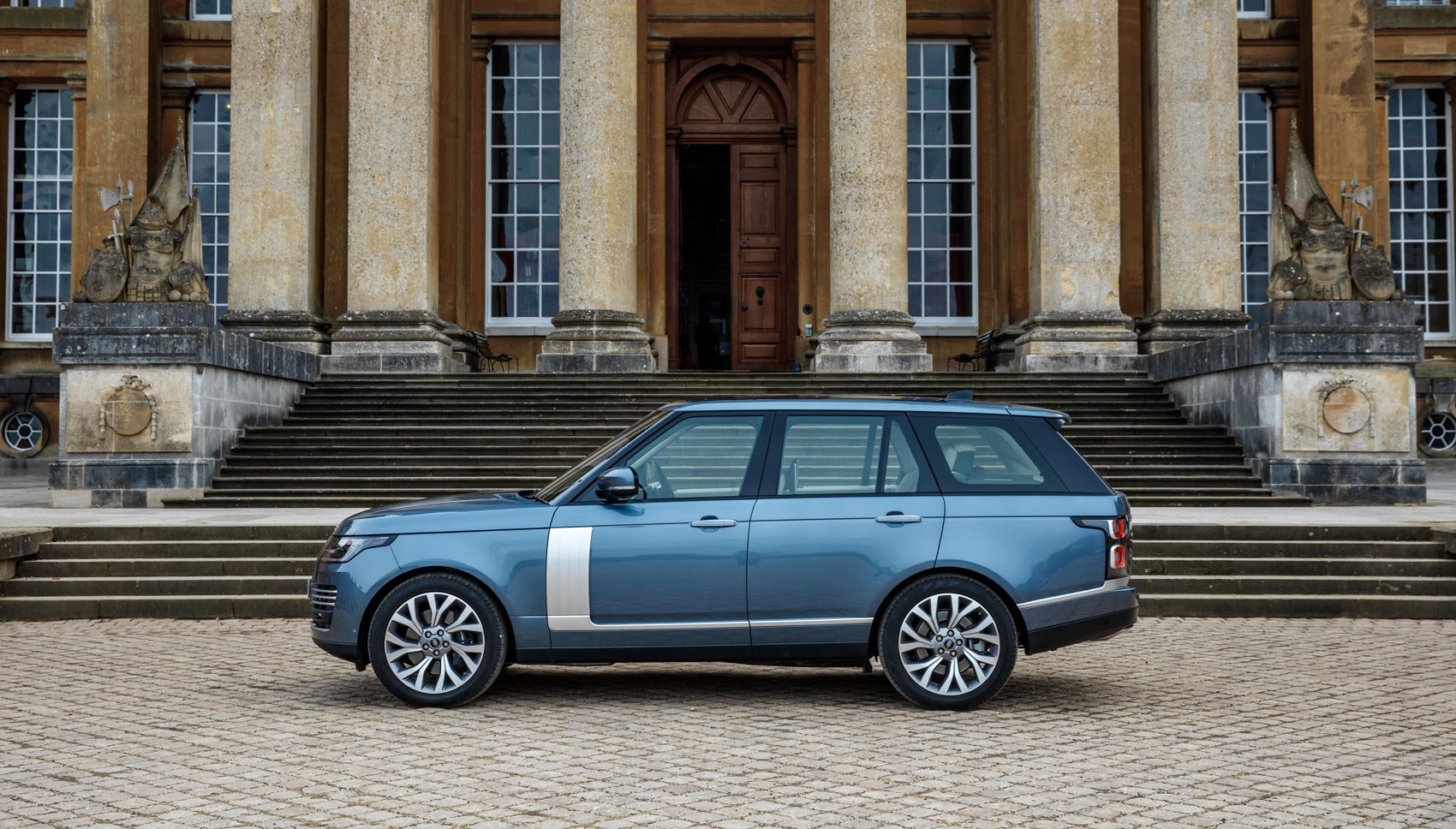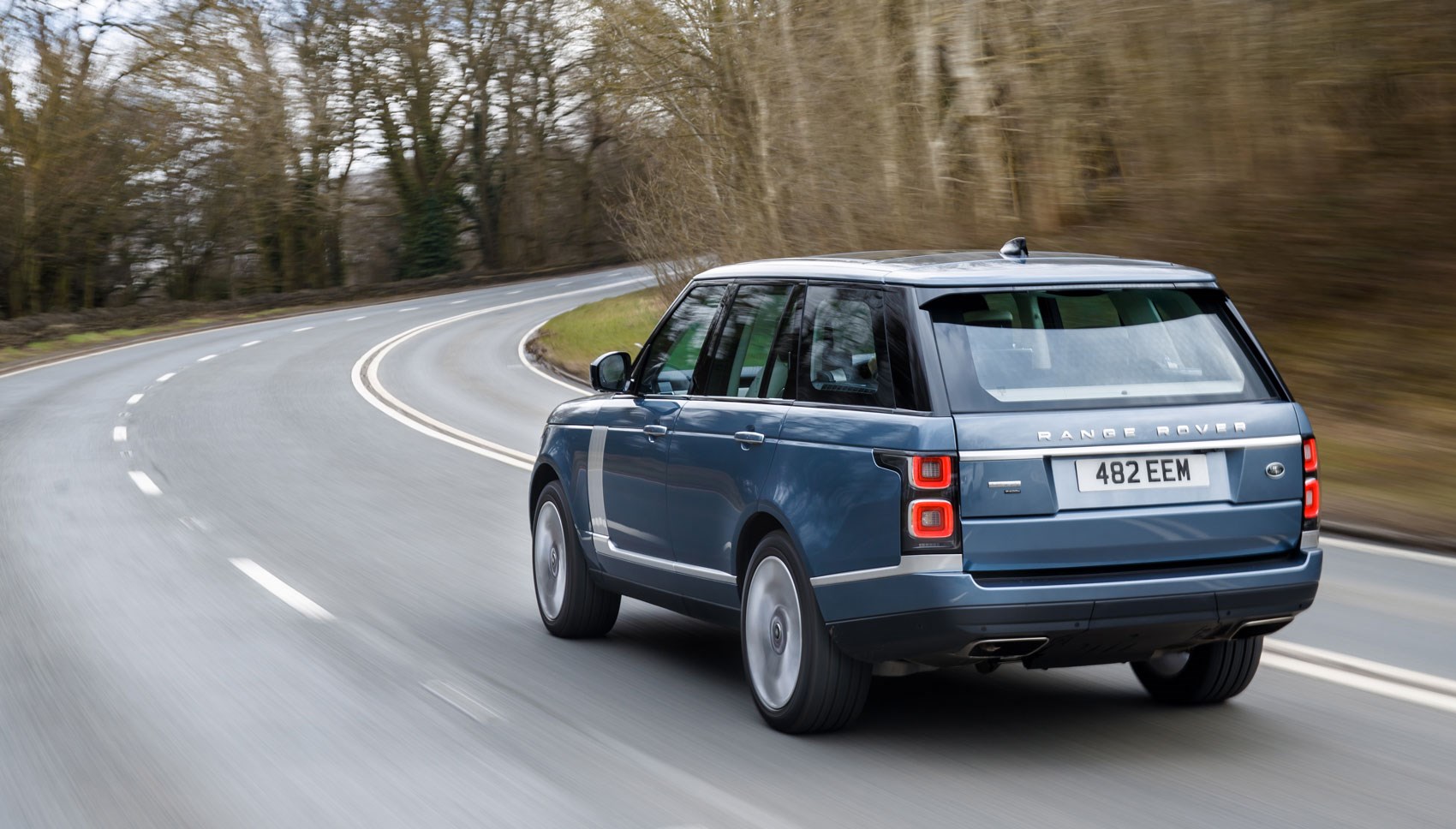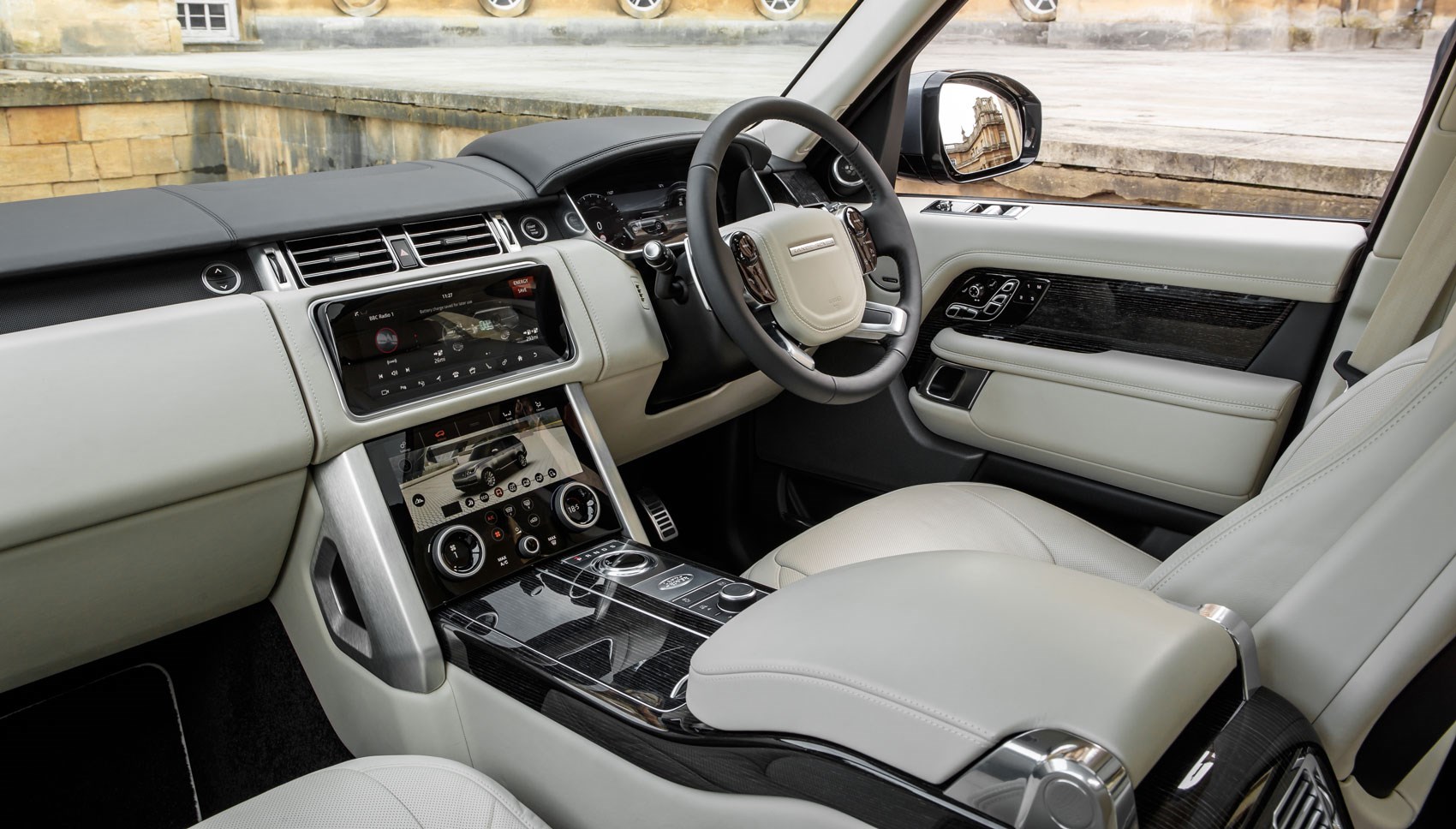► Range Rover P400e PHEV driven
► Tested in full on UK roads
► 31-mile electric range, almost 400bhp
Jaguar’s’s i-Pace may have stolen the EV headlines right now but Land Rover is getting in on the act, too, with this plug-in hybrid Range Rover and the Range Rover Sport, both badged P400e.
This year’s update updates the exterior design but also injects some extra luxury into the interior that, while fine at the model’s lower price points, quickly fell behind when the Range Rover pushed upward toward Bentayga country.
Best hybrid cars: read our guide to plug-ins, PHEVs and more
What’s more, the new plug-in hybrid P400e powertrain option was brought into being, pairing Jaguar Land Rover’s 2.0 turbo Ingenium four (296bhp) with an electric motor within the ZF eight-speed transmission and a battery beneath the boot.
Yes, a four-cylinder Range Rover
Land Rover would politely ask that you consider your requirements and choose the Range Rover powertrain of best fit, rather than getting hung up on cylinder count.

But yes, this is a four-cylinder Range Rover, albeit one with figures that put it ahead of both diesels on power and between them on torque. What’s more, while the EV-only range is just 31 miles, the P400e is designed to operate as a 400-horsepower car wherever possible, effectively ring-fencing a little battery charge (nourished with regenerative braking) that means you shouldn’t be left wanting by an off-duty electric motor.
From the driver’s seat the only electrification clues are an EV button, to turn the Range Rover into a heavy, quite expensive and oddly packaged if desirable EV, and a new driver’s display showing power drain and regen as you work the pedals. There’s also a Save mode, to preserve charge for use later in a journey, accessed by a swipe of your finger on the upper infotainment screen.
Revealed: the best hybrid SUVs
How does the hybrid Range Rover drive?
In the Range Rover the P400e powertrain works well enough, but it seems a better fit in the smaller Range Sport. The four-cylinder petrol with e-assistance makes a pretty good first of feeling like a far bigger engine, only sounding hard-pushed if you really extend it. The ZF eight-speeder wasn’t the slickest on downshifts, either – hesitating longer than comfortable.

And while generally the two power units worked together in pretty seamless concert, little inconsistencies in the regenerative braking also point at a little more work to be done. On that point, Land Rover has deliberately steered clear of a high level of regen, currently the trend in EV circles, preferring instead to give the car behaviour consistent with other, more conventionally powered Range Rovers. It’s an interesting decision, and certainly the swift and serene P400e system needs little acclimatisation, with most of the battery regen coming from coasting and brake inputs.
Gimme the important numbers…
The P400e starts at £87,600. The 85kW e-motor’s motor’s juiced by a 13.1kWh battery beneath the boot floor (luggage capacity drops by 98 litres as a consequence). Peak figures are 398bhp and 472lb ft of torque for a 0-60mph time of 6.4sec (versus 6.5sec for the SDV8).
The additional hardware brings with it some 300kg of additional mass for a kerbweight of 2509kg, but the striking economy and emissions figures are 101mpg and 64g/km. On paper, at least…
And the other 2018 changes?
Land Rover’s chosen to push the revised Range Rover’s ride/handling balance toward comfort with tweaking damper and spring settings, safe in the knowledge that the new drive modes (Dynamic and Comfort) offer the option to firm things up when you up the ante. However, the car we drove was yet to have its suspension properly tuned to the heavier powertrain and combined the twin gripes of an unyielding ride and slack body control. Take comfort then from the fact that the Range Rover Sport P400e we drove, again in prototype form, carried the additional weight effortlessly and felt great on freeways and canyon roads alike.
The big news inside is Touch Pro Duo, the slick infotainment system that debuted in Velar, whose twin glossy screens do a great job of lifting the revised interior. This also includes materials from a higher drawer (most noticeably in the brushed aluminium detailing around some of the controls) and wider seats made possible by the relocation of their controls to the doors, Mercedes style.

The seats are softer too and predictably gorgeous to nestle into, particularly in the back, with Executive Class Seating (standard on Autobiography). This combines a powered centre armrest (heated) with a footrest (heated) and recline and massage functions to ensure comfort beyond anything you might have at home.
The overall effect, when combined with the fundamental brilliance of the Range Rover’s big glasshouse and command seating, is an interior space within which every mile is ridiculously pleasant, whether you’re queuing in traffic or cruising a little beyond the speed limit.
Verdict
The new P400e PHEV powertrain is harder to wholeheartedly recommend in the grand scheme of the whole range, compared to the same powertrain in context of the Range Rover Sport. Still, the P400e’s combination of relatively low running costs and potential for near-silent progress in traffic will make it the Range Rover to go for.
Check out our Land Rover reviews